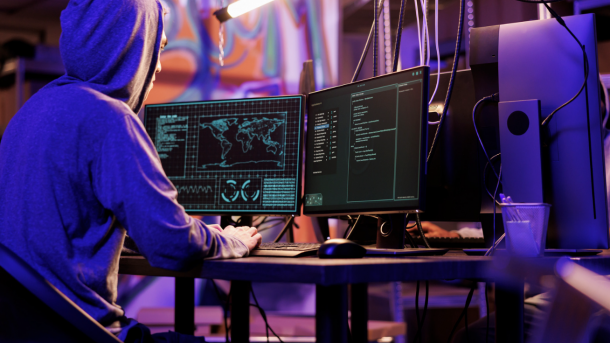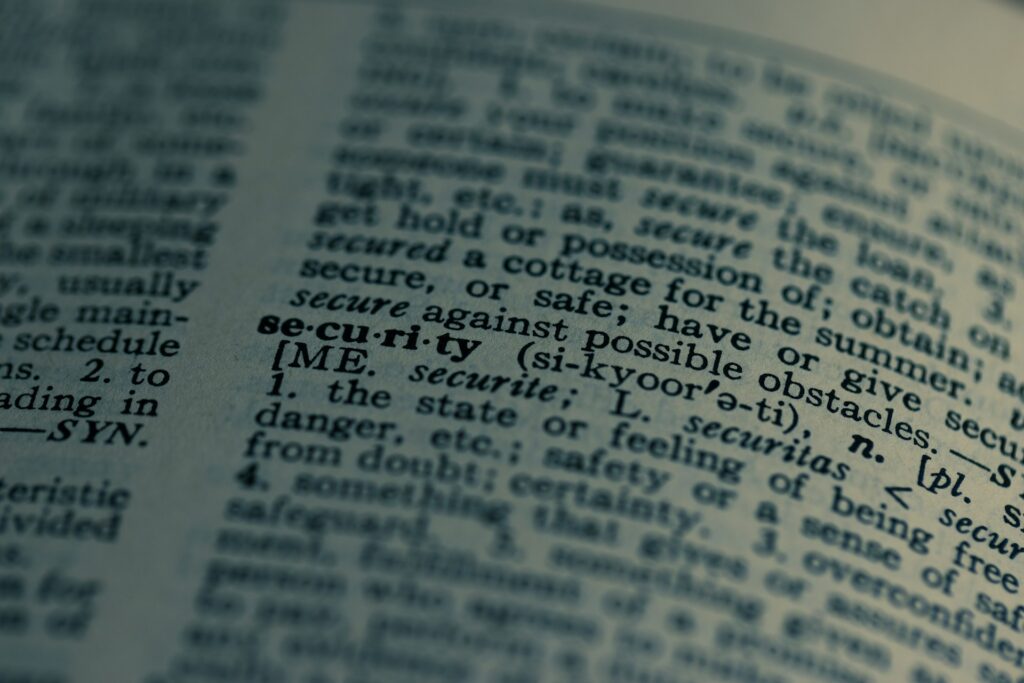Contrary to public opinion, not all cyberattacks are financially motivated.
That may be difficult to accept, as cybercrime syndicates can rake in $100 million from a single attack.
Nevertheless, cyberattacks are becoming increasingly ideological, social or cultural in a genre called hacktivism.
The modern digital vigilante is actively targeting the financial world. That’s why bankers must be ready to defend against website defacement, DDoS attacks, and other devastating cyberattacks.
Today, we’re going to highlight the history of hacktivism, reveal the leading forms of hacktivist attacks, and explain why banks are in the crosshairs.
What Is Hacktivism?
Hacktivism is a hybrid word that blends “hacking” with “activism.”
And what is hacktivism, exactly?
In the simplest terms, hacktivism is the weaponization of computer technology to make a political, social, or cultural statement.
Hacktivists—the frontline operatives of the genre—level attacks on governments, corporations, and institutions with whom they disagree.
Rather than pursue a financial profit, hacktivists instead seek to disrupt, expose, and embarrass organizations that they deem oppressive.
As we will discuss, hacktivists utilize several strategies to accomplish their ideological goals.
History of Hacktivism
Hacktivism was born in the 1990s.
Its predecessor was a Reagan-era fringe activity known as phreaking—a hacking subculture that manipulated telecommunication systems.
As internet technology proliferated, however, hackers hung up the phone lines and set their sights on the World Wide Web.
Early ventures in exploitation not only fueled a digital gold rush in hacktivism, but it provided a safe-haven for political protestors who enjoyed their newfound anonymity.
Though the term is often traced to the hacking cohort Cult of the Dead Cow, hacktivism first debuted in the 1995 InfoNation article, “Take the Skinheads Bowling,” which interviews filmmaker Shu Lea Cheang.
In her movie, Fresh Kills, a multinational corporation is found guilty of polluting a city and suffers a major cyberattack as retribution. According to the politics of the film, hacktivism is depicted as a righteous judgment for the company’s secret sins.
This morality play offers a helpful backdrop to discuss the ethics of hacktivism.
The Ethical Debate of Hacktivism
As a trade, hacktivism attracts its share of proponents and detractors.
Advocates consider it a peaceful method of civil disobedience, where tech-savvy sleuths spotlight perceived injustices like government abuses and corporate misconduct.
Conversely, opponents of hacktivism offer a simple retort: hacking protected computers is illegal. Hacktivism is a form of hacking. Therefore, hacktivism is illegal.
These propositions raise a valid question: what’s the difference between a hacker and a hacktivist?
Though the two terms are used interchangeably, it’s important to specify their defining traits:
- Hackers are skilled technicians who breach computer networks without authorization.
While white hat hackers identify security vulnerabilities through ethical means without malicious intent, black hat hackers have malicious intent and use illegal methods to exploit vulnerabilities. The resulting cyberattacks by black hat hackers are designed to cause chaos, steal data, and turn a profit. In the community of hackers, there are other shades based upon intent (i.e., red, blue, green, gray) but in the end they also have unscrupulous, malicious, or criminal intent.
- Hacktivists are skilled technicians who breach computer networks for politically-motivated purposes.
Hacktivists leverage many of the digital weapons pioneered by black hat hackers, including Distributed Denial-of-Service (DDoS).
Hacktivists are hackers, as the Federal criminal code affirms. According to the Computer Fraud and Abuse Act (CFAA), all hackers are forbidden to intentionally breach computer files without authorization.
Hacktivists use social and political movements as cover for breaking the law. Though they brandish a more subtle moniker, they frequently inspire the same level of anarchy as Guy Fawkes, their patron saint.
Ultimately, committing a crime for a “good cause” is both subjective and dangerous—especially in the digital age.
Types of Hacktivism Attacks
Hacktivists utilize a diverse range of tactics.
Depending on their intended target—and the message they want to spread—they will use some or all of the following methods:
- Doxing, which publicly exposes sensitive information about people and organizations.
For example, hacktivists will freely post an employee’s private home address online. - Website defacement, where intruders alter the visual appearance of a website. For example, hacktivists may “graffiti” a webpage with politically-motivated messaging.
- Distributed Denial-of-Service (DDoS) attacks, which overwhelm servers with traffic and disrupt operations. DDoS attacks remain the leading attack vector among hacktivists.
- Data breaches, where hacktivists infiltrate systems and ransack confidential data.
This recently occurred with the major attack on Disney’s internal chat messages. - Redirection, where bad actors steer traffic to websites that espouse their political agendas. This is a common method for hacktivists to amplify their messaging.
- Website mirroring, where hacktivists clone a censored website and make it publicly available. Mirroring is also known as spoofing, one of the most lethal cyberattacks.
As you can see, each of these methods blurs the line between activism and cybercrime.
And even though hacktivists may not extort payments, they frequently cause enormous reputational damage and financial losses to victim organizations.
Famous Hacktivism Events
Hacktivism made headlines throughout the Russo-Ukrainian war.
In addition to drone strikes and trench warfare, the Russian and Ukrainian armies have enlisted their savviest digital operators in a relentless cyber-war.
Since Russia’s full invasion in Ukraine began in February 2022, dozens of volunteer Ukrainian hacktivist groups have emerged. In fact, cyberattacks have grown so prevalent that the International Committee of the Red Cross (ICRC) has issued ground rules—dubbed the Geneva code of cyber-war—for civilian hackers to follow.
This is the digital world we have inherited, and it has been built on the ruins of major events, including:
- Operation Payback (2010), which targeted the major opponents of internet piracy, including Visa, MasterCard, and PayPal.
This was one of many attacks perpetrated by Anonymous, a global network of hacktivists. The following year, Anonymous spearheaded the infamous data breach on Sony’s PlayStation network.
- The Ashley Madison Data Breach (2015), which revealed over 37 million names in one of the biggest hacks on record.
Though the hacktivists were never caught (unlike some members of Anonymous), a collective known as The Impact Team took credit for breaching Ashley Madison—a website that facilitated extramarital affairs.
- Panama Papers (2016), which leaked nearly 12 million documents from the Panamanian law firm Mossack Fonseca.
The breach unveiled how the ultra wealthy—including over 70 world leaders—successfully hid their wealth via offshore shell companies. To this day, the whistleblower remains anonymous.
Whether attacking corporations or individuals, hacktivists cast a very wide net.
Over the last year, DDoS attacks have increased nearly 200% across the Americas, thanks in large part to the rise in hacktivism.
Most recently, DDoS attacks have been leveled against the Alabama state government by Anonymous Sudan, a pro-Islamic hacktivist group that has also targeted Danish hospitals and Scandinavian Airlines over the last two years.
Why Banks Are Becoming Targets
For years, banks have known they’re a prime target for cybercriminals.
Even a brief glimpse at the news reveals the extent of the banking cybersecurity problem, while nearly 36% of all DDoS attacks target global financial services companies—an issue that is only expected to increase.
While it may be tempting to blame these statistics on hackers alone, new information has emerged: hacktivists are hunting banks like never before.
According to the Wall Street Journal, modern banks face a “barrage of cyberattacks…primarily driven by a surge in so-called hacktivists who target companies in geopolitical hot spots.”
While these attacks were once brushed aside as low-level distractions—especially when compared to more costly data breaches—analysts are far less cavalier.
Why? Because they recognize that even minor hacktivist attacks can take a bank offline, destabilize workflows, and leave the organization vulnerable to further exploitation.
While banks must offer the seamless service customers expect, hacktivists threaten that equilibrium.
As for why hacktivists are targeting banks? Little imagination is needed.
Recall the uproar from Occupy Wall Street in 2011, then move that Sturm und Drang into the digital realm.
Banks have always had direct access to the money supply and the levers of power. As such, they become perennial symbols of oppression to agitators of the Leninite tradition.
In 2024, however, banks also manage vast troves of data, which makes them especially appealing to bad actors.
Thanks to the remote workforce and digital economy, it has never been easier for problem-seekers to feed on financial institutions. Rather than needing to physically seize the steps and porticos of Financial Districts, hacktivists can now assault bank websites from the comfort of their home.
The spirit of hacktivism has always existed, but now it has a fully democratized platform.
Nevertheless, though these phenomena have a longstanding history, they are not to be taken lightly. Banks, whether small or large, must defend themselves from miscreants who seek to undermine their reputation and business operations.
Stopping Hacktivists With a .Bank Domain
As we have seen, hacktivism has a broad arsenal of weaponry.
But here’s the good news: most of them rely on the same old tricks, like mirroring your website, impersonating your team, and spoofing your digital domain.
.Bank puts an end to that uncertainty.
While public domains are open to imitation, .Bank domains can never be counterfeited.
Here’s why: in addition to our exclusivity, all .Bank domains employ specific security measures that guarantee your authenticity is never in question.
These rigorous security requirements include:
- Security by default via the HTTPS protocol and HSTS Preload.
- DNSSEC with strong cryptographic algorithms.
- Strict enforcement of TLS encryption settings to secure web and email services.
Plus, when combined with DMARC, SPF, and DKIM (and our global DMARC policy), .Bank becomes a fortress of trust in the cyber-war landscape.
With .Bank, your bank’s digital identity is never in doubt. Schedule a meeting to discover how we can help you defend your domain and put the brakes on hacktivism and other cyberattacks.



